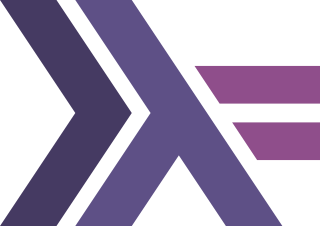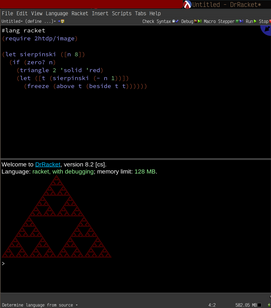| Paradigms | Multi-paradigm: event-driven, reactive, dataflow, functional, imperative, object-oriented (prototype-based) |
|---|---|
| Designed by | Leo Meyerovich, Arjun Guha, Jacob Baskin, Gregory Cooper, Michael Greenberg, Aleks Bromfield, Shriram Krishnamurthi |
| First appeared | 2006 |
| Stable release | 2.1 / 2 November 2009 |
| Typing discipline | Dynamic, duck |
| Implementation language | JavaScript |
| Platform | Web browser |
| License | BSD 3-clause |
| Website | www |
Flapjax is a programming language built on JavaScript. It provides a spreadsheet-like reactive programming, dataflow computing style, termed functional reactive programming, making it easy to create reactive web pages without the burden of callbacks and potentially inconsistent mutation. Flapjax can be viewed in two ways: either as a library, for use in regular JavaScript programs, or as a new language that the compiler converts into generic JavaScript. In either case, the resulting programs can be run in a regular web browser. Flapjax comes with persistent storage and a simple application programming interface (API) that masks the complexity of using Ajax, and sharing and access control (AC) for server data. [1] [2]

A programming language is a formal language, which comprises a set of instructions that produce various kinds of output. Programming languages are used in computer programming to implement algorithms.
JavaScript, often abbreviated as JS, is a high-level, interpreted scripting language that conforms to the ECMAScript specification. JavaScript has curly-bracket syntax, dynamic typing, prototype-based object-orientation, and first-class functions.
A spreadsheet is an interactive computer application for organization, analysis and storage of data in tabular form. Spreadsheets were developed as computerized analogs of paper accounting worksheets. The program operates on data entered in cells of a table. Each cell may contain either numeric or text data, or the results of formulas that automatically calculate and display a value based on the contents of other cells. A spreadsheet may also refer to one such electronic document.
Contents
It is free and open-source software released under a 3-clause BSD license.

Free and open-source software (FOSS) is software that can be classified as both free software and open-source software. That is, anyone is freely licensed to use, copy, study, and change the software in any way, and the source code is openly shared so that people are encouraged to voluntarily improve the design of the software. This is in contrast to proprietary software, where the software is under restrictive copyright licensing and the source code is usually hidden from the users.
The Flapjax compiler is written in the language Haskell.

Haskell is a statically typed, purely functional programming language with type inference and lazy evaluation. Type classes, which enable type-safe operator overloading, were first proposed by Philip Wadler and Stephen Blott for Standard ML and implemented later in Haskell. Its main implementation is the Glasgow Haskell Compiler. It is named after logician Haskell Curry.




